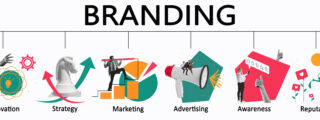
Marketing by Generation
Each generation is different. Whether it’s the way they shop, where they source information, or what drives them and what doesn’t, one thing is for sure. Except for a few overarching trends, one size definitely does not fit all. The most important universal want and need revolves around service. Considering that 86% of shoppers told the National Retail Federation they will pay more for good service, superior service needs to be stressed in messaging to all ages.
Tip: Want to sell to a millennial? Then involve their friends and parents.
To help you focus on and speak to the various generations you serve, we’ve culled tips from a variety of resources and range of experiences (including our own). Here then are several savvy strategies for creating marketing and messaging that speaks to each of four generations—Millennials, Gen Xers, Boomers, and Silents.
MILLENNIALS (born 1981-1995)
While Gen X is known as the computer generation, Millennials are the tech generation. That means they move fast from one online venue to another. For example, by the time older generations were just getting comfortable with Facebook, Millennials had already moved on. As for messaging, Cincom Systems stresses, “Marketers and salespeople must be careful to not invade online spaces that Millennials want to keep pitch-free.” Smart marketers will, however, appeal to the “group-think” mentality of Millennials. As Cincom puts it, “Want to sell to a millennial? Then involve their friends and parents.”
GEN XERS (born 1965-1980)
Most will definitely research your products and business online before deciding if you’re worth their time—a commodity of which they have very little. According to VirTasktic, don’t opt for hard-core sales strategies. And, be sure to back up your claims with research or strong testimonials.
BOOMERS (born 1946-1964)
They are definitely demanding and won’t put up with scripted pitches. They’ve already heard it all, so don’t think you can fool them. Instead, make sure your marketing is on point and factual.
SILENTS (born mid-1920’s-1945)
They respond to human, not digital, interactions and to two key messages: honesty and transparency. Your marketing strategies and face-to-face interactions should reflect both.
Whether the customer/patient is old or young, many marketers will tell you they now measure success in terms of increased customer satisfaction, as opposed to just bottom-line business. That, according to Salesforce Research, has remained the case for the past two years. And, it’s something you should take into account in all your generational messaging, from Silents to Millennials. Do you market differently to the various segments of your patient base? If so, join in the conversation on Facebook here, and tell us what strategies have been most successful.
Comments are closed.







